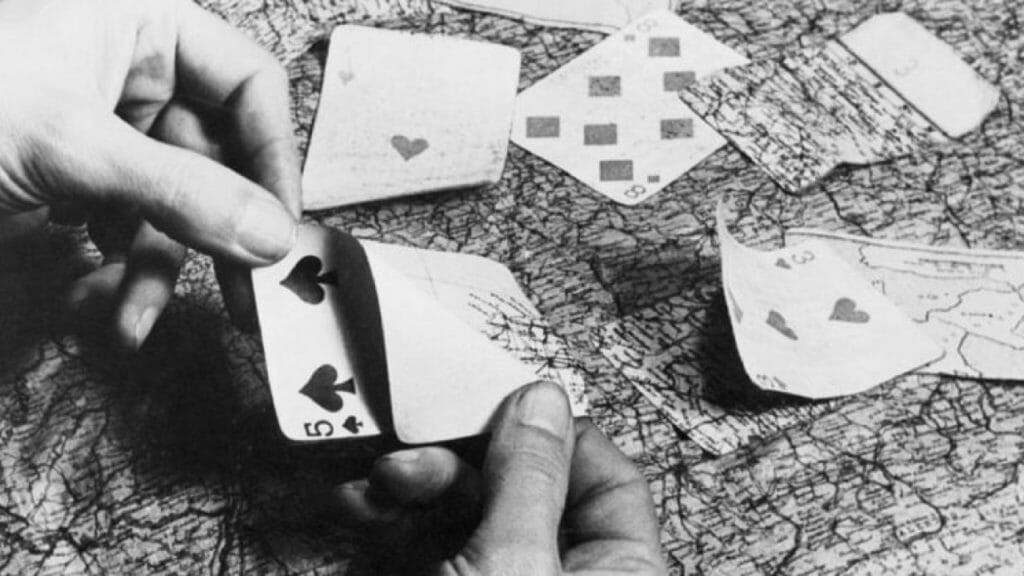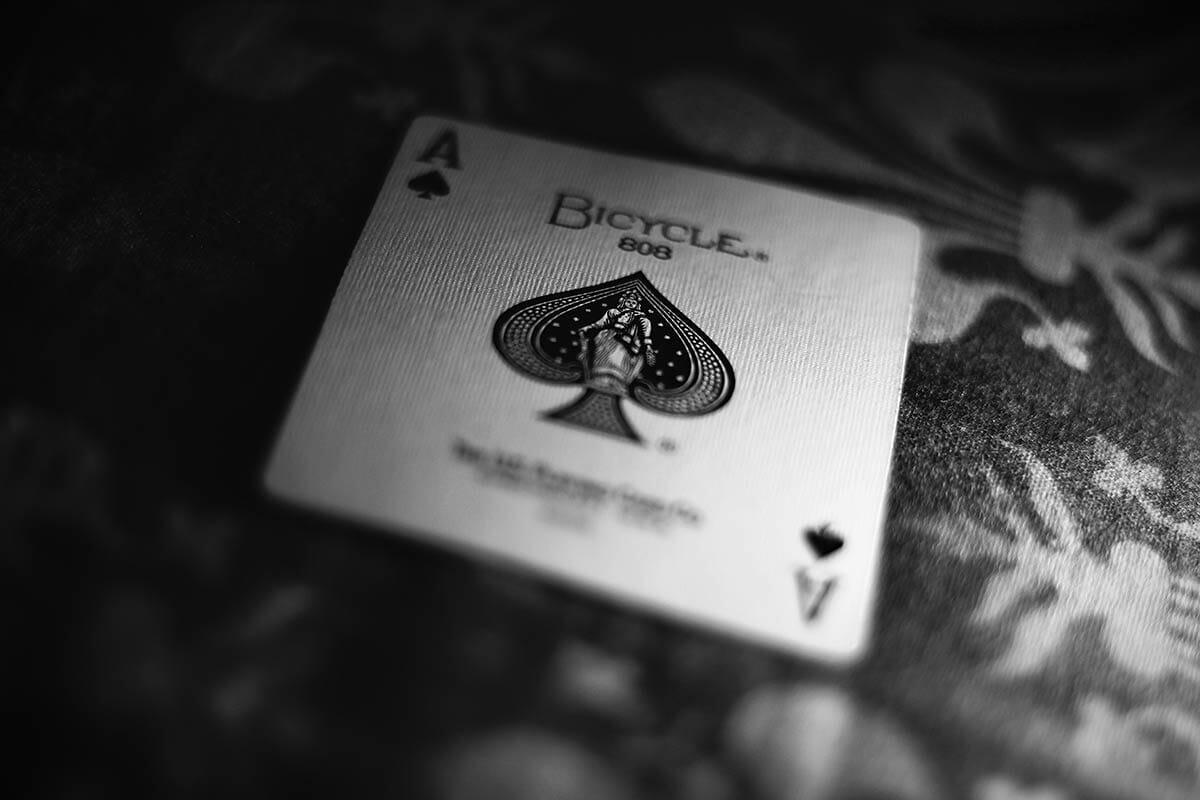Coincidence, myths, and history. Here are nine cool hidden facts that you may not know about poker playing cards.
Playing cards vs the science of numbers
Playing cards date back hundreds of years, and there’s been some speculation about why a deck of cards has 52 cards, four suits, two colors, etc, etc.
Some believe that the two colors, red and black, represent day and night. The four suits represent the four seasons of the year. Now in a deck you have 12 court cards, which could represent the 12 months of the year.
There are also 12 animals in the cycle of the Chinese calendar, or 12 zodiac symbols. There are 13 cards in each suit. 13 could represent the lunar cycle. The moon travels around the Earth 13 times a year. And there are also 13 weeks per season. 52 cards in a deck, 52 weeks in a year. Coincidence?

Numbers and figures
Now there’s a myth that says that if you add up all the single values of the playing cards together, they will give you 365. Now this myth is false, but if you do the math, take the average value of a playing card, which is seven, multiply that by the number of suits, which is four, and multiply that by the number of card in every suit, which is 13, that should give you 364, add a Joker, 365.
The total for each suit is 91 points (Jacks, Queens and Kings are worth 11, 12 and 13 points respectively), which is obtained by multiplying by four 364 points plus a joker point. A classic game comes with 2 jokers, which gives a total of 366 for leap years.
Shuffle up and deal!
if you perfectly shuffle a deck of cards, one card per one card, this is known as a fair shuffle, if you do this eight times in a row, the deck will return to its original order.

Maps hidden in playing cards
in World War II, the US Playing Card Company teamed up with the British intelligence to send troops playing card maps. These maps were hidden on the inside of a playing card. When wet, you could split these cards open. Adding all the cards together would create a full-sized map.
They created a special line of playing cards cheap enough so that they could send troop at least one deck of cards and these would not arouse suspicions from enemy troops.
Decks of cards are said to have helped at least 32 people escape from Colditz Castle and prompted some 316 escaped attempts. No one knows how many decks were produced, but the only known two surviving decks are held in the Washington D.C. Spy Museum.
But that’s not all. They were also later used in the Vietnam War because the ace of spades was said to represent death in certain cultures, the US soldiers had ordered thousands and thousands of playing cards made up of just ace of spades they would stick in their helmets to instill fear in their enemies.
There are more ways to shuffle a deck of cards than there are atoms on Earth
Did you know there are more ways to shuffle a deck of cards than there are atoms on Earth? The total number of ways to shuffle a deck of cards is 52 factorial. Now what does that mean? It means 52 times 51 times 50 times 49 and so on and so on and so on give you a number which is so large, eight with 65 zeros.
So to put this in practical terms, you could shuffle a deck of cards every second since the beginning of creation of the Big Bang, and still to this day not have had the same arrangement twice. So basically if you took every planet in the universe and had people on that planet, give each of them a deck of cards and let them shuffle a deck of cards once per second, still to this day, you would not have the same arrangement twice.
So every time you pick up a deck of cards, just know that you’re holding a completely unique order that no one has likely ever seen.

Who and when were invented poker playing cards?
The oldest known playing cards are Chinese and date from the end of the Tang period (618-907). The cards arrived in Italy via Turkish merchants in the 13th century and in France at the end of the 14th century.
There were already four suits, but with figures inspired by Italian, Spanish or German graphics. The symbols were leaves, bells, swords, sticks, acorns, etc… .
What is the origin of ‘Hearts’, ‘Diamonds’, ‘Clubs’ and ‘Spades’?
Hearts, spades, clubs and diamonds come from the Latin signs – cup (for the heart), sword (for the spade), stick (for the club ) and denier (for the diamonds). Everybody knows the four suits of the traditional French card game, composed of 52 cards.
The heart represents the clergy and its clergymen, considered to be good men.
The spade is similar to the sword, the weapon of the knights, the symbol of justice.
The club is associated with the land workers. By extension, today it symbolizes luck.
Finally, the diamond, whose initial motif was a shield, refers to merchants, money and wealth.
Why are there 52 cards in a deck?
Setting the number of playing cards at 52 could have 2 origins. While it is generally believed to be based on the number of weeks in the Gregorian calendar, some experts also suggest that this number could be inspired by the Egyptian calendar.
Based on the Gregorian calendar, a set of cards would refer to the 4 seasons by its 4 suits, and would display 12 court cards. In the Egyptian version, the 4 suits would refer to the 4 seasons, while the 13 court cards would represent the 13 months of the lunar calendar year.
Why do we burn cards in poker?
In poker, a burned card is a card that’s dealt from the surface of a deck but is unused or discarded by the dealer. If you are making the transition from live to online poker, then you might come across the burnt card tradition somewhat bizarre.
How come poker dealers discard cards on the surface of a deck? Let’s discover it.
The most important reason poker dealers burn cards would be to avoid cheating. This sort of cheating is generally committed via marked playing cards. Players might have the ability to spot the very best card when it’s marked or has a folded edge.
When dealers burn cards, they efficiently remove any opportunity of players distinguishing a card and obtaining an unfair advantage in a hand.
Famous Playing Cards
The allure of famous playing cards often lies in their historical significance and unique design. One such deck, a 16th-century hand-painted set, became the most expensive deck ever sold at auction, fetching $143,352.
These cards are prized not only for their age and rarity but also for the artistry they exhibit, often reflecting the cultural and societal norms of their time.
Collectors and enthusiasts seek out these decks for their historical connections, intricate designs, and the stories they tell about the past.
The Science of Cardistry
Cardistry is the mesmerizing art of card flourishing, where practitioners use skillful manipulations to create eye-catching movements and patterns with a deck of cards.
This discipline combines elements of sleight of hand, juggling, and visual art, requiring dexterity, precision, and creativity.
Beyond mere entertainment, cardistry has evolved into a form of expression and a vibrant community, with enthusiasts pushing the boundaries of what can be achieved with a deck of cards.
Guinness World Records for Card Structures
The Guinness World Record for card structures showcases human ingenuity and patience. Bryan Berg set a record by constructing a 25-foot 9½-inch tall house of cards, using over 218,000 cards without any adhesive.
This feat exemplifies the delicate balance and meticulous planning required to create such towering structures, highlighting the potential of playing cards as a medium for engineering marvels.
Most Expensive Deck
The most expensive deck of playing cards, a 16th-century hand-painted set, sold for $143,352 at auction, representing a pinnacle of collectibility.
This deck stands out for its historical significance, artistry, and the craftsmanship of its era, making it a highly sought-after piece for collectors. Its value reflects the cultural and monetary worth placed on rare and unique items in the world of collectibles.
Joker’s Origin
The Joker’s origin traces back to the 1860s in America, introduced as a trump card for the game of Euchre.
Its evolution into a standard component of the playing card deck reflects the adaptability and innovation in card games.
The Joker has since taken on various roles and meanings, often serving as a wild card, and has become a cultural icon in its own right.
Dead Man’s Hand
The Dead Man’s Hand, comprising aces and eights, is steeped in Wild West folklore, associated with the legendary figure Wild Bill Hickok.
This hand symbolizes the unpredictability of fate and the dangers of the frontier life. It has been immortalized in stories, films, and songs, embodying the essence of the Old West’s lore and continuing to fascinate with its blend of history and mystery.
Four Kings’ Identities
The identities of the four kings in a deck of cards are often attributed to historical figures: Charlemagne (Hearts), David (Spades), Caesar (Diamonds), and Alexander the Great (Clubs).
This association imbues the deck with a sense of history and legend, connecting players with the past and the storied leaders who shaped the world.
These identities reflect the cultural significance and symbolic power of playing cards.

